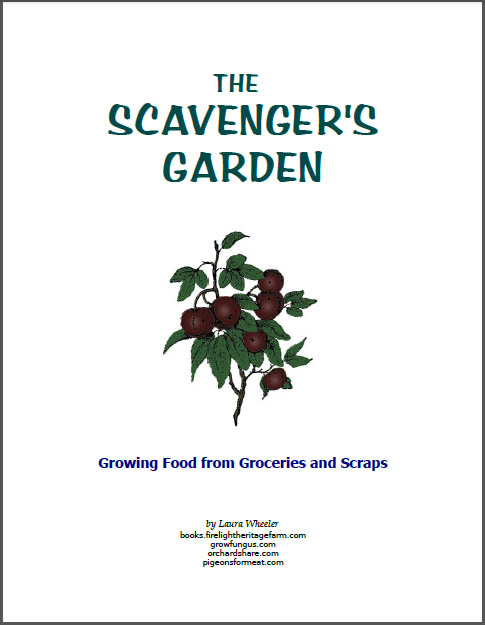 Click to Download Your Free Heritage Pickling and Culturing e-Book Now!
Click to Download Your Free Heritage Pickling and Culturing e-Book Now!
Instant Download, NO Registration Required!
Herbs to Propagate by Cuttings
Many herbs can be shared with friends and family, or increased in number around your yard or farm, simply by taking cuttings, or rooting a branch. It is a simple process in most cases, and saves you the cost of more seed or additional potted plant starts.
There are two simple methods of propagating new plants from old.
1. Cutting. Cut a piece from the existing plant. The piece should be taken from a branch that is long enough to have well developed leaves - for roses, this means leaf clusters of 5, for some other plants this means clusters instead of single leaves, etc.
The harder the wood, the longer the cutting, in general. Most plants do best a cutting of at least 5" in length.
Remove the leaves up an inch or two on the stem.
Place the bare stem part either in damp soil, or in water - get at least 1" covered. If you place multiple stems in a single jar of water, then you'll need to separate them when root buds appear, so the roots do not grow tangled up.
Keep the stem wet (check the water level to make sure it does not drop too much), or keep the soil damp. They should root within about 1 month.
Generally rooting hormone is not needed, though some fussier plants may root more successfully using it. There are also several natural alternatives (I have not tested these), which include willow bark water, chamomile tea, honey water, and a few other similar solutions.
2. Layering. Layering is a technique for rooting a stem without removing it from the mother plant.
Lay a stem on the ground - strip the leaves where it is in contact with the ground, and cover that section with soil.
Leave it there, keep it damp, for a month or so, and then cut the new plant free of the mother plant. You can then dig up the new plant and put it where you want it.
Layering works best for delicate plants that root easily but which do not work well with environment changes.
The following is a list of herbs which are known to form roots on cuttings (this list is by no means comprehensive).
- Mint
- Rosemary
- Basil
- Lavender
- Catnip
- Lemon Balm
- Oregano
- Marjoram
- Roses (for Rose Hips) (below the five leaf level on the branch)
- Sage
- Wormwood
- Hyssop
- Lemon Verbena
- Tarragon
- Thyme
- Winter Savory
- Bay
- Spearmint








